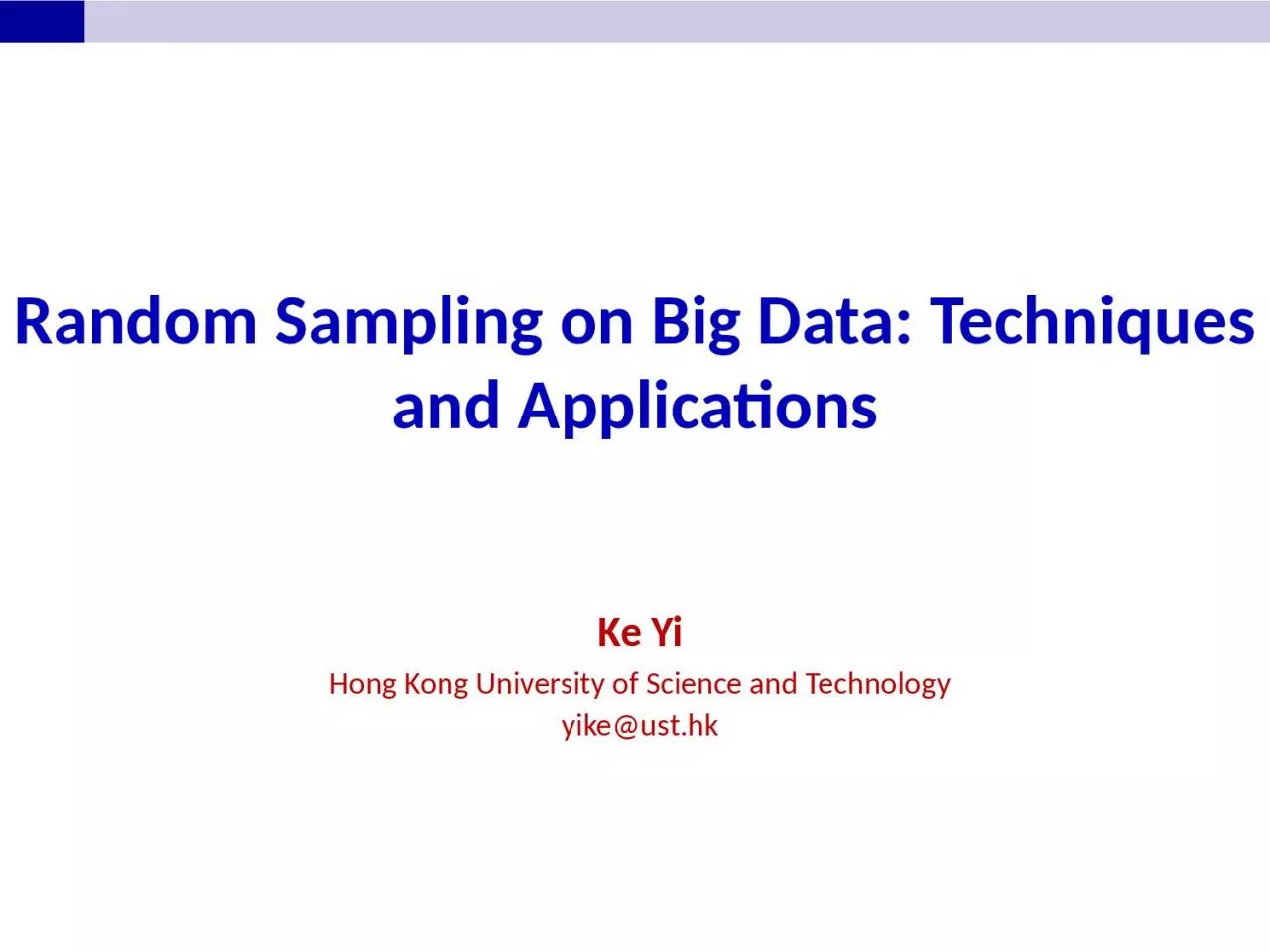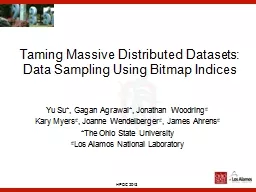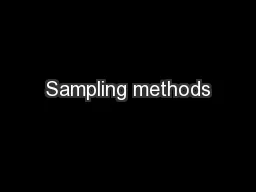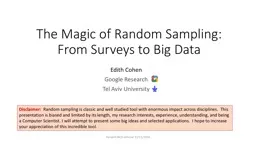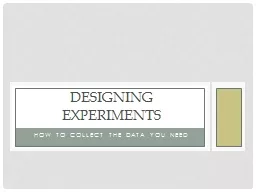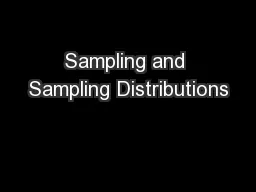PPT-Random Sampling on Big Data: Techniques and Applications
Author : easyho | Published Date : 2020-08-28
Ke Yi Hong Kong University of Science and Technology yikeusthk Random Sampling on Big Data 2 Big Data in one slide The 3 Vs Volume External memory algorithms Distributed
Presentation Embed Code
Download Presentation
Download Presentation The PPT/PDF document "Random Sampling on Big Data: Techniques ..." is the property of its rightful owner. Permission is granted to download and print the materials on this website for personal, non-commercial use only, and to display it on your personal computer provided you do not modify the materials and that you retain all copyright notices contained in the materials. By downloading content from our website, you accept the terms of this agreement.
Random Sampling on Big Data: Techniques and Applications: Transcript
Download Rules Of Document
"Random Sampling on Big Data: Techniques and Applications"The content belongs to its owner. You may download and print it for personal use, without modification, and keep all copyright notices. By downloading, you agree to these terms.
Related Documents

